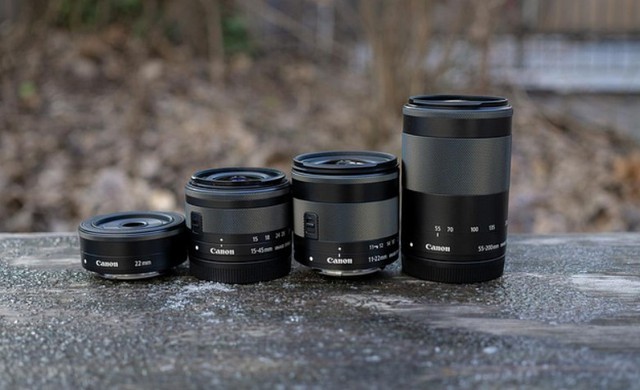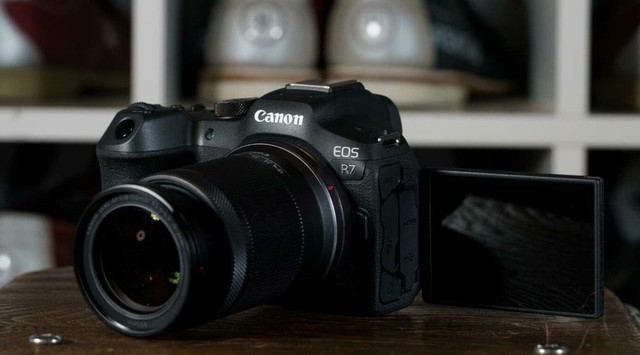Should Canon give up on the EOS M line of cameras and the EF-M lens system?
Canon recently launched the EOS R7 and R10 APS-C-sensor cameras. Along with that is the new RF-S lens system for cameras for RF mounts and crop sensors. This may seem strange since Sony and Nikon have had APS-C models for a long time, but this is a big deal because Canon already has an EF-M mount and EOS M line of mirrorless cameras that use an APS-C crop sensor.

This begs the question, is Canon about to phase out the EOS M series?
Panasonic and Olympus ushered in a new era of mirrorless cameras with the formation of the Micro Four Thirds alliance and the introduction of the Panasonic G1.
It was a bold move that stemmed from Olympus’ failure to transition from film to digital. This failure caused the company to rethink what a modern digital camera is and then it released the M43 Olympus E-1 sensor camera in 2003.
The camera was one of the professional models targeted at journalists and sports paparazzi but it failed to attract customers.
Canon EOS M series and EF-M mount
When Sony, Fujifilm or Olympus had soon entered the mirrorless camera market, Canon was not very interested in this camera line and was only interested in large-sized DSLR cameras. Sony (2010), Nikon (2011) are all ahead of Canon. It wasn’t until 2012 that Canon first released the EOS M.
Like Sony and Fuji, it equips the M-series with an APS-C sensor (crop factor of 1.5) for a satisfying combination of image quality and camera size. This was in contrast to Nikon’s use of a CX sensor (crop factor 2.7) which seemed like a good idea at the time but posed limitations on image quality and depth of field.
What both Nikon and Canon have in common is their approach to mirrorless cameras. Those are consumer products and not aimed at professionals.
First, the technological underpinnings of mirrorless cameras is the rejection of mirror sound, but their implementation is flawed. Contrast-based autofocus systems were still relatively poor then, and limited battery life prevented them from becoming mainstream products.

Second, DSLR cameras ten years ago are still very popular. DSLR sales peaked in 2012 and became the largest camera segment in 2013. So there was no reason for companies like Canon to focus so much on mirrorless cameras that they forgot about cameras. DSLR is still having quite impressive sales.
But that all changed after Sony introduced the A7 full-frame mirrorless camera in 2013. From bulky DSLR cameras, it has now been reduced to a significantly more compact camera.
Going back to the EOS M series, we have two main problems with the transition to a mirrorless system. Firstly, the mount has similar specs to Sony’s E-mount and is designed for APS-C sensors. although you can squeeze the full-frame sensor inside, and Sony has done that, there are technical limitations compared to mounts specifically designed for full-frame, including Canon’s RF mounts and Nikon’s Z-mount.
If Canon is going to produce a full-frame mirrorless camera system to replace DSLR cameras, it will not follow the path that Sony has taken, but start from the ground up to produce something that is the best and the most reliable. Designed to last. Second, the existing lens lineup for the EF-M is very limited and remains at just eight lenses. So starting from scratch seems more feasible.
Opening a new “dynasty” for the RF mount system
It can be said that the time Canon decided to develop the RF mount was around 2015 after witnessing the success of the A7 full-frame mirrorless camera line.
Nikon and Canon then faced a dilemma. Both feature APS-C and full-frame DSLRs, in addition to separate mirrorless systems. Therefore, it is difficult for the two companies to determine which sensor format the mirrorless camera system should be in.
With the advantage of being ahead, Sony owns quality APS-C and full-frame mirrorless cameras. The company also has for itself a massive lens system, designed specifically for each sensor size. Sony has created an ecosystem of lenses that users need.
Nikon is following suit. Nikon has phased out and no longer produces DSLR cameras. For now, Nikon will focus primarily on the Z-series mirrorless cameras with both APS-C and full-frame sensors. In fact, Nikon made its intentions clear early on when it launched the Z6 and Z7 series in 2018 and then the APS-C Z50 series in 2019.
Meanwhile, Canon stuck with full-frame mirrorless cameras and it wasn’t until 2021 that rumors about APS-C appeared and the first APS-C sensor mirrorless camera was released in 2022. Canon. The R7 is a high-end APS-C camera while the R10 is a cheaper but also packed with impressive features.

Both can use full-frame lenses, so the range of uses is quite diverse. But users do not need to worry as Canon has been developing more mirrorless lens models equipped with APS-C sensors. While Canon has significantly added RF lenses, they don’t have to be common to the new APS-C because the price, size, weight, or focal length are all quite different.
What future for mirrorless cameras with APS-C sensors?
Considering Canon’s history of involvement in the mirrorless camera market, the company certainly has long-term plans for the EOS, EOS M and RF APS-C series cameras. Currently Canon’s line of DSLR cameras and APS-C lenses are still selling well. As for the EOS M series, it seems that Canon is no longer interested.
In particular, the EOS line of DSLR cameras is also in the final stages, although Canon is still continuing to produce for well-meaning buyers, it is likely that DSLRs will soon be out of production in the future. Nikon’s withdrawal from the DSLR market could provide a boost to the segment as Canon’s sales will increase significantly. However, that is not an opportunity for Canon to launch new models of DSLR cameras.

It’s not surprising that Canon is still maintaining the EOS M even though the last camera to launch in the EOS-M series, the M50 Mark II, was released in 2020. One major reason Canon is still holding on to the M-series is now. perhaps because they are selling well in the Japanese market and regularly topping the sales charts.
But just because it is selling well in the Japanese market does not mean that Canon will continue to maintain the EOS-M line. The launch of the R7 and R10 series of cameras and lenses and the RF-S lens system shows Canon’s upcoming goals.
Although Canon has not confirmed that the EOS or EOS M series will be discontinued, the story is probably only a matter of time. Especially if Canon continues to invest heavily in the mount system and RF-S lenses, the death of Canon EOS M will not be far away. Because the economic article does not allow Canon to embrace too many product lines with the same characteristics.
Refer to Petapixel
at Blogtuan.info – Source: genk.vn – Read the original article here



